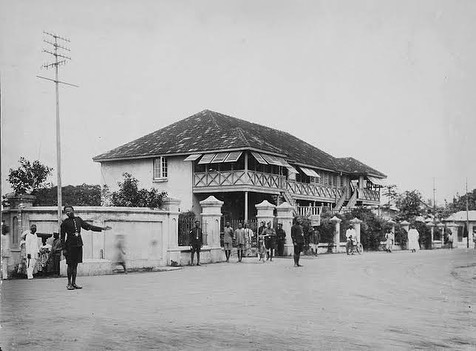Construction of the Magnificent Shitta Mosque on Lagos Island.
The famous Shitta-Bey Mosque was built in 1891 with funding provided by the illustrious businessman and philanthropist Mohammed Shitta, often known as “Olowo Pupa,” the first Seriki Musulumi of Lagos. Various sources have estimated that the mosque’s construction cost between £3000 and £7000. Senor Joao Baptista Da Costa, a Brazilian exile in Lagos, designed the mosque with Afro-Brazilian architectural elements with help from native constructor Sanusi Aka. Another design by Senor Da Costa is the Taiwo Olowo Monument in Lagos. On July 4, 1894, the Shitta-Bey Mosque was inaugurated under the direction of Sir Gilbert Carter, the Lagos governor. Oba Oyekan I, Edward Wilmot Blyden, Abdullah Quilliam (who represented Sultan Abdul Hamid Il of the Ottoman Empire), and well-known Lagosian Christians including James Pinson Labulo Davies, John Otunba Payne, and Richard Beale Blaize were among the others there. In a letter sent to the Sultan of Turkey, Quilliam urged the Muslims of Lagos to accept Western education. Mohammed Shitta-Bey sadly passed away exactly one year after the mosque opened.





